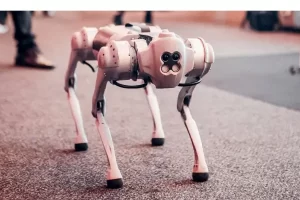In today’s fast-paced industrial landscape, the term “robotic manufacturing” has become synonymous with innovation and efficiency. As companies seek to enhance productivity, reduce costs, and improve safety, the adoption of robotics in manufacturing processes is accelerating. This article delves into the multifaceted world of robotic manufacturing, examining its definition, benefits, types of robots used, applications across various industries, challenges faced, and future trends that promise to reshape the production landscape.
What is Robotic Manufacturing?
Robotic manufacturing refers to the use of robots in the manufacturing process to perform tasks that were traditionally done by human workers. This technology encompasses a wide array of systems and applications, from simple automated tasks to complex, integrated manufacturing processes.
Historical Context and Evolution
The roots of robotic manufacturing can be traced back to the early 20th century, with the introduction of assembly lines. However, it wasn’t until the 1960s and 1970s that industrial robots began to gain prominence, particularly in the automotive industry. Today, advancements in artificial intelligence (AI), machine learning, and sensor technology have propelled robotic manufacturing into new territories, enabling a level of flexibility and adaptability that was once unimaginable.
Key Components of Robotic Manufacturing Systems
A typical robotic manufacturing system includes several components:
- Robots: The mechanical arms or mobile units that perform tasks.
- Controllers: The computer systems that manage robot movements and operations.
- Sensors: Devices that provide feedback about the robot’s environment, enhancing precision.
- End Effectors: Tools or grippers attached to robots, enabling them to interact with their environment.
- Software: The programming that dictates how robots operate, often incorporating AI for smarter decision-making.
Benefits of Robotic Manufacturing
The integration of robots into manufacturing processes offers numerous benefits that contribute to the overall success and sustainability of industries.
Increased Efficiency and Productivity
Robotic systems can operate continuously without breaks, leading to higher output levels. They can perform repetitive tasks faster and more accurately than humans, significantly reducing cycle times. For example, automotive assembly lines utilizing robots can produce vehicles at a fraction of the time it would take human workers alone.
Cost Savings in the Long Run
While the initial investment in robotic systems can be substantial, the long-term savings often outweigh these costs. Reduced labor costs, lower error rates, and minimized material waste contribute to a more efficient production cycle. Companies can often see a return on investment within a few years of implementation.
Consistency and Quality Control
Robots excel at performing tasks with precision, leading to high-quality products with fewer defects. This consistency is crucial in industries where tolerances are tight, such as aerospace and electronics manufacturing. The use of robots minimizes variability, ensuring that each product meets the same stringent quality standards.
Safety Improvements in Hazardous Environments
Robots can be deployed in environments that are dangerous for human workers, such as those involving toxic substances, extreme temperatures, or heavy lifting. By handling these tasks, robots help to reduce workplace injuries and ensure a safer work environment.
Types of Robots Used in Manufacturing
Robotic manufacturing encompasses various types of robots, each suited for specific applications.
Industrial Robots
Articulated Robots: These robots have rotary joints and are highly flexible, making them suitable for tasks like welding, painting, and assembly. Their range of motion allows them to perform complex movements.
SCARA Robots: Standing for Selective Compliance Assembly Robot Arm, SCARA robots are particularly effective for tasks that require horizontal movement, such as assembly and packaging. They offer high speed and precision for repetitive tasks.
Delta Robots: Characterized by their unique three-arm design, delta robots are known for their speed and agility. They are ideal for picking and packing applications, particularly in the food and beverage industry.
Collaborative Robots (Cobots)
Cobots are designed to work alongside human operators, enhancing productivity without replacing human labor. They are equipped with sensors to ensure safety, allowing them to operate in close proximity to workers. This collaboration can lead to increased efficiency while maintaining the benefits of human oversight.
Mobile Robots and Automated Guided Vehicles (AGVs)
Mobile robots and AGVs are used for material handling and logistics within manufacturing facilities. They transport materials between different areas, reducing the need for manual labor and streamlining the supply chain.
Applications of Robotic Manufacturing
Robotic manufacturing has found applications across various industries, revolutionizing processes and driving innovation.
Automotive Industry
The automotive sector was one of the first to embrace robotic manufacturing. Robots are used for tasks such as welding, painting, and assembly. Their ability to operate in hazardous environments and perform repetitive tasks efficiently has made them indispensable in modern car production.
Electronics and Semiconductor Manufacturing
In the electronics industry, precision is paramount. Robots are employed in the assembly of delicate components, ensuring high accuracy while minimizing the risk of damage. Additionally, they are used for testing and quality assurance processes.
Food and Beverage Processing
Robots play a crucial role in the food industry, where they handle tasks ranging from packaging to palletizing. They help maintain hygiene standards and reduce the risk of contamination, which is vital for food safety.
Consumer Goods Production
From packaging to assembly, robots enhance the production of consumer goods. Their flexibility allows manufacturers to adapt quickly to changing market demands, ensuring efficient production lines that can handle various products.
Challenges in Robotic Manufacturing
Despite the many advantages, the transition to robotic manufacturing is not without its challenges.
High Initial Investment Costs
The upfront costs of purchasing and implementing robotic systems can be a barrier for many companies, especially small and medium-sized enterprises (SMEs). While the long-term savings can be significant, the initial financial commitment can be daunting.
Integration with Existing Systems
Many manufacturers have existing processes that may not easily accommodate new robotic systems. Integrating robots into these established workflows can be complex and may require significant adjustments to machinery and operations.
Skills Gap and Workforce Training
As automation increases, there is a growing demand for workers with technical skills to operate and maintain robotic systems. Upskilling the workforce and providing adequate training is essential to ensure a smooth transition and maximize the benefits of robotic manufacturing.
Maintenance and Reliability Issues
Robotic systems require regular maintenance to ensure optimal performance. Downtime due to repairs or malfunctions can lead to production delays, underscoring the importance of reliable technology and a skilled maintenance workforce.
The Future of Robotic Manufacturing
The future of robotic manufacturing is bright, with several trends poised to shape the industry in the coming years.
Trends Shaping the Industry
AI and Machine Learning Integration: The incorporation of AI allows robots to learn from their environments and improve their performance over time. This advancement leads to greater adaptability and efficiency in manufacturing processes.
IoT and Smart Manufacturing: The Internet of Things (IoT) enables seamless communication between machines, creating smart factories that can optimize production processes in real time. This connectivity enhances efficiency and reduces waste.
Sustainable Practices: As environmental concerns grow, manufacturers are increasingly focused on sustainability. Robotic systems can help optimize resource use, reduce waste, and contribute to greener production practices.
Predictions for the Next Decade
Experts predict that the use of robots in manufacturing will continue to expand, with increasing adoption in industries beyond traditional manufacturing sectors. The rise of flexible manufacturing systems will allow companies to respond quickly to changing consumer demands, driving innovation and competitiveness.
The Role of Robotics in Sustainable Manufacturing
As industries face pressure to adopt sustainable practices, robotic manufacturing offers solutions to reduce environmental impact. Robots can optimize energy use, minimize waste, and enhance recycling processes, contributing to a more sustainable future.
Conclusion
Robotic manufacturing represents a pivotal shift in how products are made and industries operate. The benefits of increased efficiency, cost savings, and improved safety make it an attractive option for manufacturers across various sectors. However, the challenges associated with initial investment, integration, and workforce training must be addressed to fully realize the potential of this technology.
As we look to the future, the integration of AI, IoT, and sustainable practices will continue to drive innovation in robotic manufacturing. Companies that embrace these advancements will not only enhance their production capabilities but also position themselves as leaders in a rapidly evolving marketplace.




